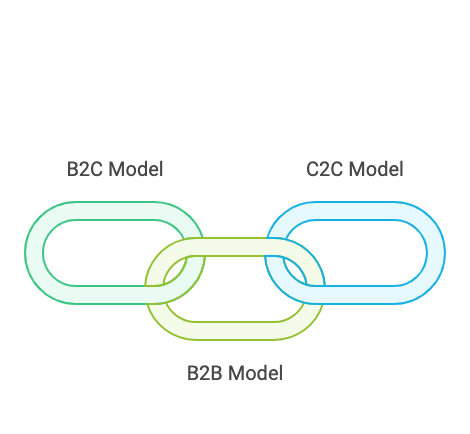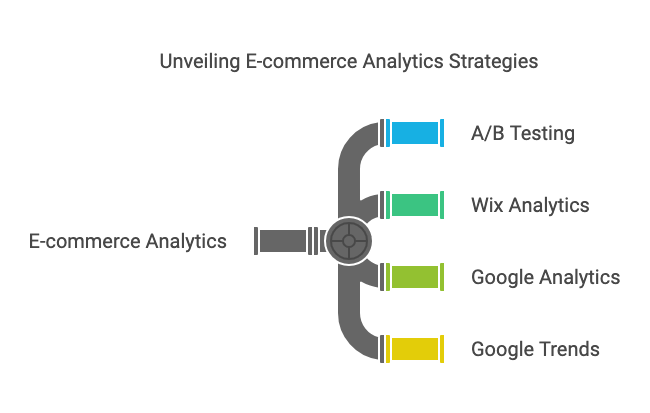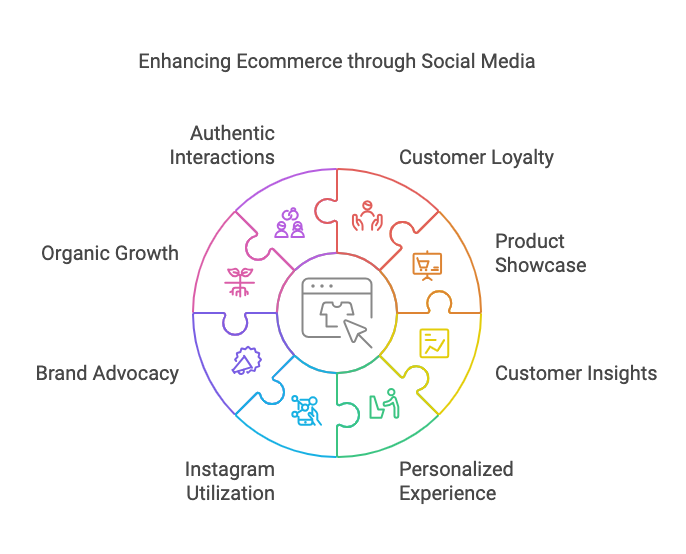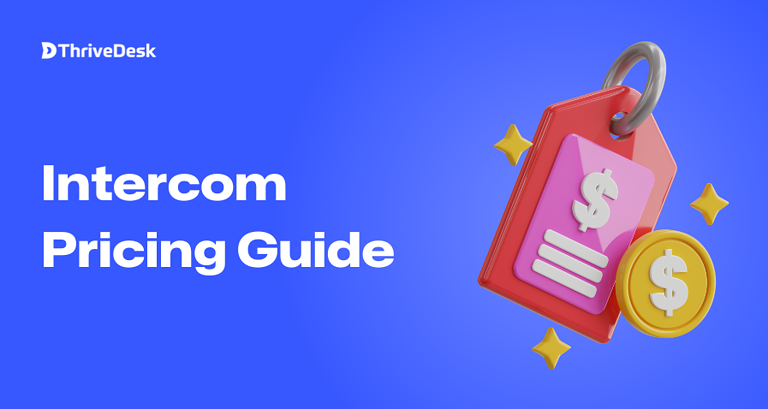Starting your own e-commerce business is incredibly exciting. The allure of reaching customers worldwide is irresistible. However, navigating this vast landscape can feel overwhelming and complex.
There are countless factors to consider, from choosing a niche to establishing strong customer service.
Studies show that 60% of new businesses fail due to improper planning. Understanding the essentials can set you on the right path to success.
In this article, we’ll explore ten essential tips for launching your e-commerce venture. Let’s dive into transforming your dream into a thriving business reality!
Table of Contents
Identify your niche and validate your business idea
Identifying your niche is the first step. Begin with competitor analysis to understand the market. Spot gaps that your products can fill.
Engage with potential customers directly. Use surveys, social media, and face-to-face chats. Understand their needs and challenges.
Next, validate your niche. Check the Amazon Best Sellers list. Look for popular products and consumer buying trends.
Once you find a broad product market, narrow it down. Focus on a specific category that suits your skills. Opt for a niche with minimal competition.
Key factors like product life cycle, price, and profit margin are vital. These affect scalability and profitability significantly.
Niche Validation Checklist:
- Competitor Analysis
- Customer Engagement
- Product Trend Analysis
- Niche Focus
- Market Competition
- Product Economics
Choose the right business model
Choosing the right e-commerce business model is vital. It affects product sourcing and customer interactions.
Common models include B2C, B2B, and C2C. Each model has unique dynamics and target audiences.

B2C involves selling directly to individual consumers. B2B focuses on transactions between businesses, often with recurring purchases. C2C facilitates interactions through online marketplaces.
Consider product delivery methods and operational guidelines. Will you manufacture or source from others? Reliable supply chain management is essential.
A table can help compare these models:
| Model | Description | Key Aspect |
|---|---|---|
| B2C | Direct to individual consumers | Direct engagement |
| B2B | Business transactions | Recurring purchases |
| C2C | Consumer transactions via marketplaces | Peer-to-peer interaction |
When choosing, focus on potential customer needs and operational strategies. For instance, B2B relies on strong customer loyalty and stable relationships.
Select a reliable e-commerce platform
Selecting a reliable e-commerce platform is crucial. Start by considering your budget and technical skills. Different platforms offer various costs and features.
Shopify, Squarespace, and BigCommerce are popular options for all business sizes. Opt for Shopify or WooCommerce for extensive e-commerce features.
These platforms are purpose-built for online selling. They simplify processes like inventory management and payment processing.
Most platforms offer essential tools, including shipping label printing. This ensures a smooth selling process from start to finish. Some builders also provide digital marketing tools and analytics.
Here’s a quick comparison:
| Platform | Target Audience | Usability | Features |
|---|---|---|---|
| Shopify | Startups to large | Easy | Comprehensive |
| Squarespace | Creative businesses | Moderate | Stylish templates |
| BigCommerce | Medium to large | Moderate | Advanced capabilities |
Choosing the right e-commerce platform impacts your business’s future. Consider your specific needs and business goals. Exploring platforms carefully ensures a successful online venture.
Create a user-friendly online store
Creating a user-friendly online store is simple with the right tools. Online store builders like Shopify and Squarespace make life easy.
Drag-and-drop tools allow anyone to build their site. Payment processing and inventory management come standard.
For beginners, a free website builder can suffice. These platforms often feature shipping label printers and analytics software.
They provide insights into key performance indicators, enhancing your business. As your needs grow, you might consider paid subscriptions.
Some business owners invest in professional design services. This guarantees a polished online storefront.
A user-friendly site boosts customer experience and loyalty. Remember, a sleek design can convert visitors into buyers.
Here’s a quick list of must-haves:
- Secure payment options
- Simple navigation
- Clear product descriptions
Here’s a look at platform features:
| Platform | Domain Purchase | Payment Processing | Analytics Software |
|---|---|---|---|
| Shopify | Yes | Yes | Yes |
| Squarespace | Yes | Yes | Yes |
| BigCommerce | Yes | Yes | Yes |
Develop a strong brand identity
Creating a strong brand identity is essential. Start with a unique business name. Use a business name generator to brainstorm ideas.
Design a logo that reflects your product’s uniqueness. Ensure consistency in branding across your business.
Incorporate vibrant visuals to stand out. Use distinctive marketing strategies to resonate with potential customers.
Your brand’s visual identity includes your logo, color palette, and imagery. These elements should align with your business’s core values.
Here’s what to focus on:
- Consistency: Maintain it in every aspect.
- Visuals: Use colors and images that appeal.
- Differentiation: Have a clear value proposition.
| Key Element | Importance |
|---|---|
| Unique Name | First impression |
| Consistent Visuals | Cohesive, recognizable brand |
| Value Proposition | Distinguish from competitors |
Don’t forget, brand identity is more than visuals. It’s about connecting with your target customers and telling your story.
Implement effective marketing strategies
To implement effective marketing strategies for your e-commerce business, focus on understanding your target customers.
Know their behaviors, needs, and wants. This approach helps create more targeted campaigns.
Use digital platforms like social media to promote content. SEO-friendly blogs attract more customers. Tools like Google Trends can also enhance visibility.
Omnichannel strategies widen your reach. List products on third-party marketplaces such as Amazon and Instagram. This strategy helps you connect with more potential customers.
Develop a thorough eCommerce marketing plan. This plan drives traffic to your store, enhances brand awareness, and boosts customer loyalty. Consistent efforts always pay off.
Research using market segmentation and analytics tools. Create tailored marketing messages and products. Tailored marketing resonates better with potential customers.
Marketing Strategies at a Glance
| Strategy | Benefit |
|---|---|
| Social Media Promotion | Attracts and engages customers |
| SEO-Friendly Blogs | Increases search engine ranking |
| Omnichannel Commerce | Expands product reach |
Embrace these strategies with passion, and watch your e-commerce business thrive.
Optimize your site for search engines (SEO)
Optimizing your website for SEO is vital. It ensures your online store appears in search results. Start by understanding search engine optimization basics.
This involves strategically using researched keywords. Place them on your website pages to attract organic traffic.
Utilize tools like Google Trends effectively. They help determine trending e-commerce products. Google Trends also aids in assessing market viability.
Research is key to choosing the right products. This process guides you in catering to potential customers.
A well-optimized store captures attention. It boosts chances for sales conversions. Focus on making product pages appealing.
Utilize eye-catching headlines and clear descriptions. High-quality images can also enhance customer experience.
Invest time in mastering SEO for long-term success. Consistent traffic comes from good optimization.
| Strategy | Result |
|---|---|
| Strategic Keywords | Improved Search Rankings |
| Google Trends Research | Better Product Selection |
| Excellent Support | Increased Customer Loyalty |
Prioritize excellent customer service
Excellent customer service is the foundation of success. Always deliver promotions relevant and valuable. Ensure they are easy to redeem too.
Regularly test different promotion types. Adjust strategies based on customer feedback.
A personalized experience is now crucial for shoppers. Seventy percent of consumers expect tailored interactions. Personalization can significantly boost marketing ROI.
Encouraging customer reviews builds word-of-mouth advocacy. Reviews are key in attracting new buyers.
They also enhance brand reputation. Incentivize customers to share their experiences online.
Automation tools can revolutionize email campaigns. They enhance engagement and personalize experiences.
Post-purchase promotions using automation can increase customer loyalty. Here’s a simple table:
| Strategy | Benefit |
|---|---|
| Personalized Offers | Boost Marketing ROI |
| Customer Reviews | Enhance Brand Reputation |
| Email Automation | Increase Customer Loyalty |
Implement these strategies today to transform your business. Invest in customer experience for long-term growth. Everyone matters in your e-commerce journey!
Understand the costs involved in e-commerce
Starting an e-commerce business doesn’t have to break the bank. Building your own website can cost only a few hundred dollars. Consider cost-effective hosting options like WordPress to stay on budget.
Business registration and legal fees vary by location. They may reach up to $300. It’s essential to research and understand these costs early on.
Digital marketing is crucial for success. Allocate 5% to 12% of revenue for marketing, as suggested by Adobe Commerce. Effective marketing attracts potential customers to your site.
Inventory costs require careful management. Stock enough items to sell, but avoid excess. This balance prevents losses from unsold products.
New businesses invest heavily in customer acquisition. Up to 30% of their budgets go towards this endeavor.
It’s vital to gain an understanding of these costs and plan accordingly.
Here’s a quick cost breakdown:
| Expense | Estimated Cost |
|---|---|
| Website/Hosting | $100 – $500 |
| Legal Fees | Up to $300 |
| Marketing Budget | 5% – 12% of revenue |
| Customer Acquisition | Up to 30% budget |
Plan for scalability and growth
To scale your e-commerce business, conversion is key. Use strategies like optimizing product pages. Simplify your checkout process for seamless payments.
Increase Average Order Value (AOV) with upselling and cross-selling techniques.
Launch new products that your target market loves. This keeps your offerings fresh and attractive.
A loyalty program can greatly boost customer spending. Reward repeat purchases to enhance customer loyalty.
A detailed business plan is your roadmap. It helps navigate challenges and risks. Here’s a quick plan overview:
| Key Strategy | Benefit |
|---|---|
| Product Page Optimization | Higher conversion rates |
| Checkout Simplification | Better customer experience |
| Upselling & Cross-selling | Increased AOV |
| New Product Launches | Keeps products relevant |
| Loyalty Programs | Encourages repeat purchases |
Leverage analytics for performance tracking
In ecommerce, analytics are crucial for tracking performance. A/B testing helps experiment with value propositions. It identifies winning combinations for boosting sales outcomes effectively.
Utilizing analytics tools provides insights into customer engagement. Platforms like Wix have built-in analytics dashboards for this purpose.
They help track key metrics like website traffic and historical performance.
Google Analytics offers advanced insights into content performance. It tracks page views, time on page, and bounce rate. This helps identify successful content strategies.

Google Trends is useful for identifying trends and market demand. It assesses if a targeted niche is gaining traction. This allows businesses to adjust marketing strategies accordingly.
Analytics Benefits:
- Track sales outcomes through A/B testing.
- Monitor website metrics with Wix.
- Analyze content effectiveness using Google Analytics.
- Identify market trends with Google Trends.
Example Dashboard Metrics:
| Metric | Purpose |
|---|---|
| Website Traffic | Evaluate visitor engagement |
| Bounce Rate | Assess content’s ability to captivate |
| Historical Reports | Analyze past performance |
Using these tools enriches e-commerce decision-making and strategy formulation.
Stay updated with e-commerce trends
Staying updated with e-commerce trends is vital. Social commerce surged in 2023, integrating social media into your strategies is essential. Utilize social platforms to directly engage and drive sales.
Harness AI and augmented reality for a competitive edge. Tools like Trend Rocket and Trend Hunter AI offer market insights. Use these to anticipate and meet consumer demands.
Google Trends can reveal popular products or niches. Stay informed to align your offerings with current consumer interests.
A/B testing on Google Ads refines your marketing efforts before bigger investments.
Here’s a quick table to record trends:
| Trend | Tool Used | Benefit |
|---|---|---|
| Social Commerce | Social Media Platforms | Increased sales |
| AI/AR Integration | Trend Rocket, Trend Hunter AI | Competitive edge |
| Market Research | Google Trends | Target popular niches |
Remember, online business success requires constant learning. Follow these lines and your e-commerce business will thrive.
Build a social media presence
Building a social media presence is crucial. It fosters customer loyalty for your ecommerce business.
Showcase your products to reach a broader audience. With engaging content, customers return for repeat purchases.
Social media platforms collect valuable customer insights. Use this data to refine your marketing strategies.
Customize your approach to meet customer needs. This builds a personalized experience your target audience appreciates.

Instagram is particularly powerful for ecommerce businesses. Its visual nature highlights your products effectively.
Connect with your ideal customers through impactful storytelling. Inspire and engage them with curated content.
Building a solid follower base on social media pays off. Followers become champions of your brand within their networks. Encourage them to spread the word, enhancing your brand visibility.
Invest time in social media marketing, even without a budget for ads. Organic growth still needs effort for maximum visibility and engagement.
Prioritize authentic interactions to enhance your online presence and credibility.
| Impactful Social Media Tips |
|---|
| 1. Regularly post engaging content. |
| 2. Interact with your audience daily. |
| 3. Use analytics for strategy optimization. |
Focus on product quality and description
Product quality and descriptions are crucial for sales. High-quality images and compelling descriptions convert visitors into buyers.
For physical products, ensure your images shine bright. Display them clearly and prominently to attract interest.
Descriptions enhance search engine optimization. Include relevant keywords naturally. Link to helpful content to boost your SEO.
Prominent calls to action encourage purchases. Make it inviting and clear for potential customers.
For services, showcase a portfolio and testimonials. Customer reviews greatly influence decisions. Real voices and examples make a strong case. Compelling content seals the deal.
Here’s a quick checklist for success:
- Use high-quality photos.
- Write engaging, SEO-friendly descriptions.
- Add effective calls to action.
- For services, show testimonials and portfolio.
Remember, in ecommerce, details make the difference. Quality visuals and descriptions can lead to more satisfied customers.
Use these strategies to enhance your customer experience. Happy customers will return time and again.
Create effective promotional campaigns
Creating effective promotional campaigns is crucial for your ecommerce success.
Utilize targeted CPC ads like Sponsored Products to boost visibility. These ads can significantly increase attention to specific items.
Offering special deals, such as seasonal sales, can attract and convert potential shoppers.
Use digital coupons and lightning deals to entice your audience effectively. Special promotions help build a loyal customer base eager for good deals.
Social media marketing is a powerful tool to engage communities. Leverage influencers to expand your reach and connect with ideal customers.
Interacting on platforms can build a positive brand image and enhance customer loyalty.
Consistently grow your email list to engage your market. A strong subscriber list opens doors for promotional success.
Nurtured email campaigns can convert interest into sales effortlessly.
Experiment with marketing tactics and be ready to adapt. Abandon strategies that fail and embrace effective ones.
Staying agile ensures you meet changing customer preferences successfully.
Promotional Campaign Checklist:
- CPC Ads
- Special Deals
- Social Media
- Email Marketing
- Agile Tactics
Use high-quality images and videos of products
Creating an impactful ecommerce presence requires high-quality images. Photos display product details and boost consumer trust. Videos can show products in action, increasing conversion rates.
Repurpose lifestyle videos for social media. Enhanced visibility boosts engagement. A study shows 59% of users prefer video content.
User-generated content, like reviews and photos, is invaluable. It authenticates products and influences potential buyers.
Encourage customers to share their experiences.
Mobile compatibility is vital in online shopping. Over 70% of purchases happen on phones. Ensure images are compelling, clear, and quick-loading.
Here’s a table to guide visual strategies:
| Visual Strategy | Platform Usage | Impact |
|---|---|---|
| High-quality images | Online storefronts | Boosts sales confidence |
| Product videos | Social media, email campaigns | Increases visibility |
| User content | Review sections, social media | Builds authenticity |
Incorporate customer reviews and feedback
Incorporating customer reviews can massively boost your e-commerce platform. Using an app like Judge.me offers a rich and affordable solution for Shopify.
Encouraging reviews through post-purchase emails simplifies feedback collection. Include a direct link to make it even easier for your customers.
Displaying reviews prominently increases product appeal. Make sure they’re visible on product pages and the home page. This creates social proof and attracts more buyers.
Respond to all reviews, positive or negative, to show you care about improving the customer experience.
User-generated content further nurtures trust among buyers. Encourage customers to share reviews and photos.
This offers authentic insights and enhances reliability. Follow these steps to build a robust feedback loop:
Steps to Enhance Your Review Strategy:
- Install a review app like Judge.me.
- Encourage reviews via follow-up emails.
- Add direct feedback links for ease.
- Highlight reviews on key pages.
- Respond to every review promptly.
- Use customer photos to boost trust.
Focusing on reviews can offer a clearer path to a better customer experience and increased sales.
Consider mobile optimization
In today’s retail landscape, mobile optimization is essential. Nearly 80% of consumers shop on smartphones.
This shift requires e-commerce businesses to prioritize responsive design.
Different platforms offer easy solutions for mobile optimization. WooCommerce, a WordPress plugin, is intuitive and user-friendly.
Wix and Squarespace cater to small stores with straightforward designs.
Here’s a quick comparison of platform options:
| Platform | Strengths |
|---|---|
| WooCommerce | Intuitive, WordPress plugin |
| Wix | User-friendly for small stores |
| Squarespace | Simple designs for easy navigation |
Optimize your store by evaluating mobile navigation regularly. Check user feedback to keep improving the buying experience.
These steps are vital for capturing your target audience efficiently.
Explore payment gateway options
When starting an e-commerce business, choosing the right payment gateway is crucial. A reliable gateway secures customer data and reduces payment security liability.
Also, select one with competitive transaction and membership fees to ensure financial viability.
Look at customer reviews to assess gateway usability, and conduct tests in a staging area. This helps identify the best fit for your ecommerce needs.
Consider supporting multiple currencies and languages to enhance customer experience globally.
Here’s a handy checklist:
- Verify gateway security features like encryption.
- Compare transaction and membership fees.
- Ensure usability with reviews and tests.
- Support diverse currencies and languages.
Consider the following sample fees table:
| Payment Gateway | Transaction Fee | Membership Fee |
|---|---|---|
| Gateway A | 2.9% + $0.30 | $20/month |
| Gateway B | 2.7% + $0.25 | $25/month |
| Gateway C | 3.0% + $0.35 | $30/month |
Implementing encryption within your gateway is essential. This step enhances security and builds customer trust. With a secure payment process, your ecommerce operations can thrive.
Ensure compliance with legal regulations
Launching an ecommerce business requires legal compliance. First, secure an Employer Identification Number (EIN).
Next, identify additional licenses needed for your city and state. Home businesses often need fewer permits than physical stores.
Registration requirements vary by state, industry, and business type. You might need trade licenses, sales tax permits, or health safety permits.
It’s crucial to understand specific needs for your business structure and location.
Budget for permit fees upfront to avoid financial strain. Licensing costs vary, so prepare for this in your business plan.
Failing to plan for these fees could surprise your finances later.
Here’s a quick checklist:
- Obtain an EIN.
- Check state-specific license requirements.
- Consider necessary permits (e.g., sales tax).
- Budget for any associated fees.
By following these steps, you’ll ensure your ecommerce business complies with legal standards.
Establish a returns and refunds policy
Creating a returns and refunds policy is essential. With 17.6% of online sales being returned, detailed strategies are key.
Start by offering clear fit and sizing guides. This can significantly reduce return rates.
Effective communication is crucial in managing returns. Clearly communicate shipping timeframes to prevent in-transit cancellations.
Answer common customer questions upfront to minimize returns from misunderstandings.
Your returns policy should be financially sustainable. Ensure processing costs don’t exceed what the business can handle.
Structure your policy to manage financial impact efficiently.
Here’s a simple checklist:
- Develop detailed product pages (e.g., fit guides).
- Clearly state shipping timeframes.
- Answer common questions before purchase.
- Ensure the policy is financially viable.





